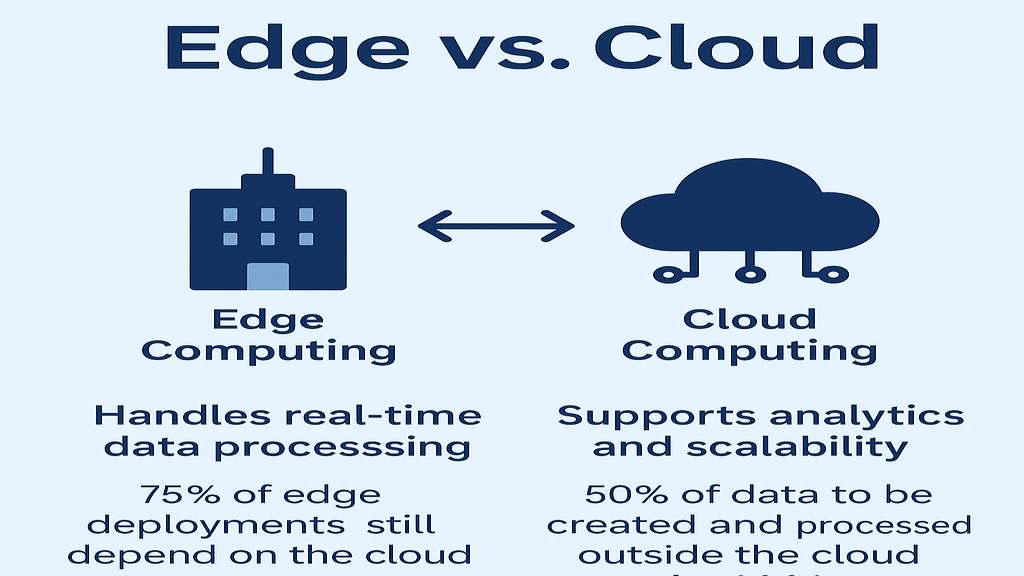With advancements like edge computing, which move data processing closer to the source, the computing landscape is undergoing rapid change. At the core of this shift are edge chips, which are specialized hardware parts made to manage processing tasks locally rather than exclusively depending on cloud data centers. If you’re new to this concept, this guide will provide a clear overview of edge chips, their role, and their significance.
Covered Contents
ToggleWhat Are Edge Chips?
Edge chips are those microprocessors or other types of semiconductor devices designed for processing data at the edge of a network. Meaning, that where data is being produced by an IoT device, an autonomous car, or an industrial machine, it’s even your smart gadget at home. The edge differs from a cloud computer that employs traditional chips: they function to process data locally ensuring faster and more efficient operation.
How Do Edge Chips Work?
Edge chips carry out computational tasks directly in or on the device or system they are embedded within. Here’s how it works:
Collecting Data:
Sensor-equipped devices gather raw data from their environment.
Local Computation:
Edge chips process data right where it is located to analyze and filter data. They extract actionable insights on-site.
Selective Transmits:
Only the most essential data is transmitted to the cloud for storage or further analysis, minimizing the use of bandwidth and reducing latency.
Why Are Edge Chips Important?
Edge chips are essential in the modern world for several reasons:
Reduced Latency:
Processing information at the edge removes the delay in sending information to distant servers.
Enhanced Privacy:
Sensitive data may be analyzed and stored locally to reduce exposure to potential breaches during transmission.
Energy Efficiency:
Edge chips optimize the use of resources, making the energy demands of data transmission and cloud reliance lesser.
Offline Functionality:
An active internet connection is not necessary for devices with edge chips to operate, making it reliable for critical operations.
Top Uses of Edge Chips
Edge chips are transforming sectors. Following are some of the prominent uses of edge chips:
Autonomous Vehicles:
Edge chips process large volumes of data from sensors in real-time, which helps the vehicle to navigate and make quick decisions on time.
Smart Cities:
Traffic signals to video surveillance, the use of edge chips improves urban infrastructure management.
Healthcare:
Wearable devices and medical equipment use edge chips for monitoring patient health and instant feedback.
Industrial IoT (IIoT):
Factories use edge chips in the machines for predictive maintenance and optimization of processes.
Consumer Electronics:
Smart home devices like thermostats, cameras, and voice assistants leverage edge chips for quick responsive performance.
Challenges in Edge Chip Development
Although edge chips have many benefits, their development is not without challenges:
Power Constraints:
The edge chips must be designed for low power but with high performance.
Security:
Edge needs robust security, so the data and the devices should be secured.
Scalability:
Scaling an edge chip for several diverse applications is complex.
Cost:
The cost of the advanced manufacturing processes of the edge chip might make them costlier than traditional chips.
Future of Edge Chips
In terms of advancement with regards to edge computing, there’s even more going to power-edge chips by the innovation of artificial intelligence, machine learning, and even 5G connectivity; enabling:
Smarter IoT devices
Faster real-time decision-making
Broader adoption across industries
In so doing, with all this progression, the role played in the more connected digital and efficient world is all made possible through the support from edge chips.
Conclusion:
Edge Chips are at the center of edge computing. they ensure data is processed much faster, in a more secure and efficient way. Edge chips help revolutionize interactions with technology-innovative devices like self-driving cars, smart cities, and wearable technologies. With this ever-increasing demand for real-time data processing, edge chips will become vital; it’s a prime area of observation in the tech sector.
If you want to explore edge computing and related technologies, stay tuned for updates and insights!



